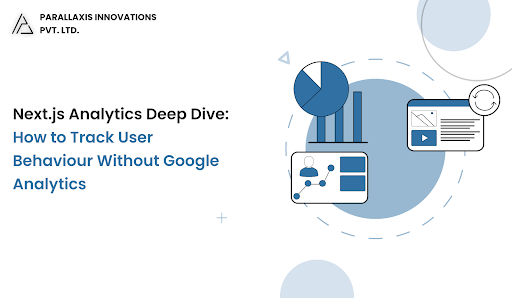Google Analytics is the default choice for many websites but it’s not the only option. In fact, with increasing privacy regulations (like GDPR and CCPA), many developers are turning to alternative solutions to track user behavior in a more transparent and compliant way.
In this guide, we’ll explore how to build a privacy-first, custom analytics solution in Next.js without relying on Google Analytics.
Why Not Use Google Analytics?
- Slows down your website - Google Analytics uses heavy scripts
- Privacy issues - It tracks user data, which raises concerns
- Ad-blockers stop it - Many users have GA blocked by default
- Better Alternatives:
- You control your own data - No third-party tracking
- Faster website - Use lightweight tracking scripts
Tools We’ll Use
- Next.js – modern React framework
- API Routes – to collect and store event data
- PostgreSQL / Firebase / Supabase / MongoDB – backend storage
- Client-side event tracking – with a lightweight script
Step 1: Set Up Next.js Project
npx create-next-app@latest nextjs-analytics
cd nextjs-analytics
Step 2: Create an API Route for Event Tracking
We'll use an API route to collect analytics events.
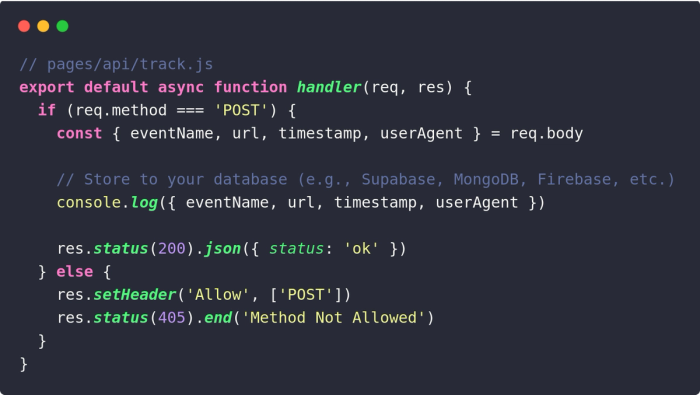
tep 3: Create a Lightweight Analytics Tracker
In _app.js or a layout component, insert this tracker to send data on route changes:
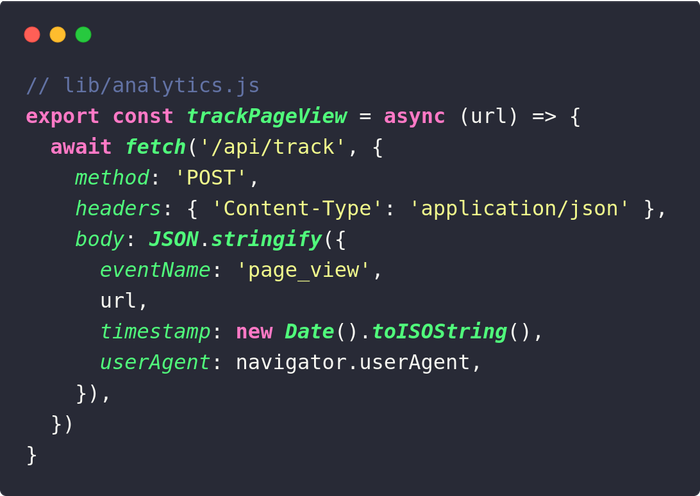
Use it in _app.js:
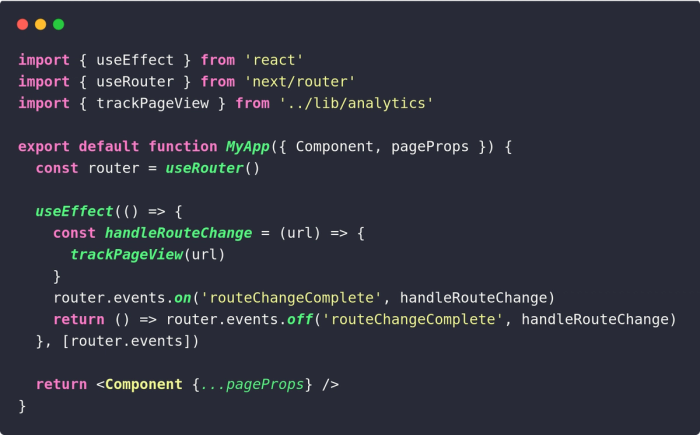
Step 4: Storing and Querying Data
Choose a backend:
- Supabase – simple Postgres-based backend with a REST API
- Firebase – real-time NoSQL database
- MongoDB Atlas – if you prefer document-based structure
Example: Supabase table schema
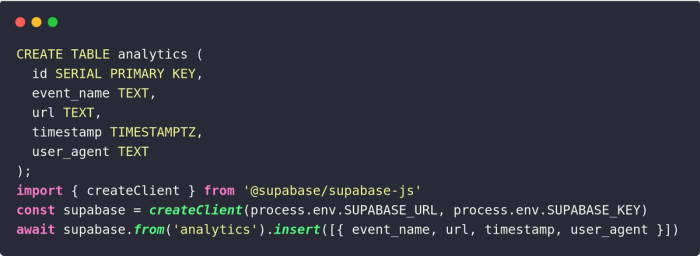
Step 5: Create a Custom Analytics Dashboard (Optional)
Build a page like /admin/dashboard that queries the analytics database and displays:
- Page views per route
- Time-based trends
- User agent breakdowns
- Traffic source (referrer headers, if captured)
Final Thoughts
By using Next.js API routes and your own backend, you can:
- Track page views and custom events
- Stay compliant with privacy laws
- Avoid third-party dependencies
Build exactly the dashboard and metrics you care about
